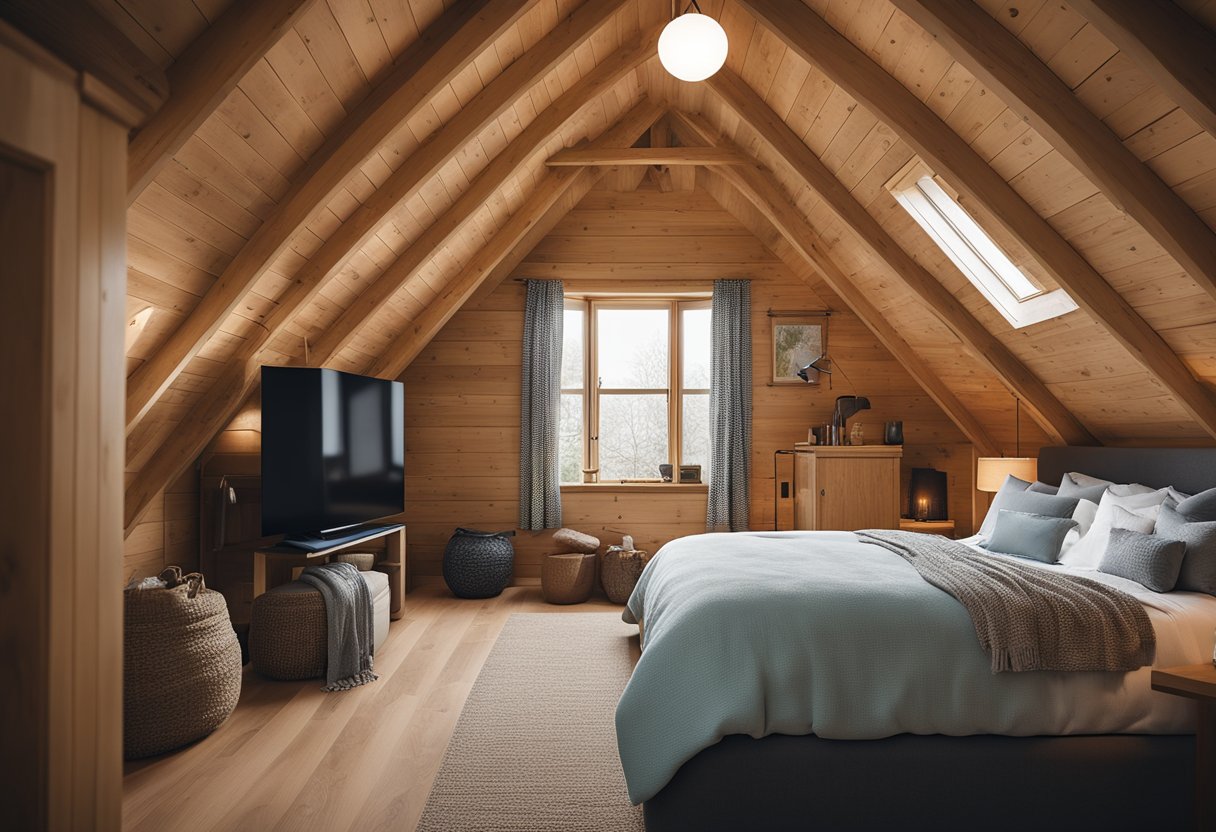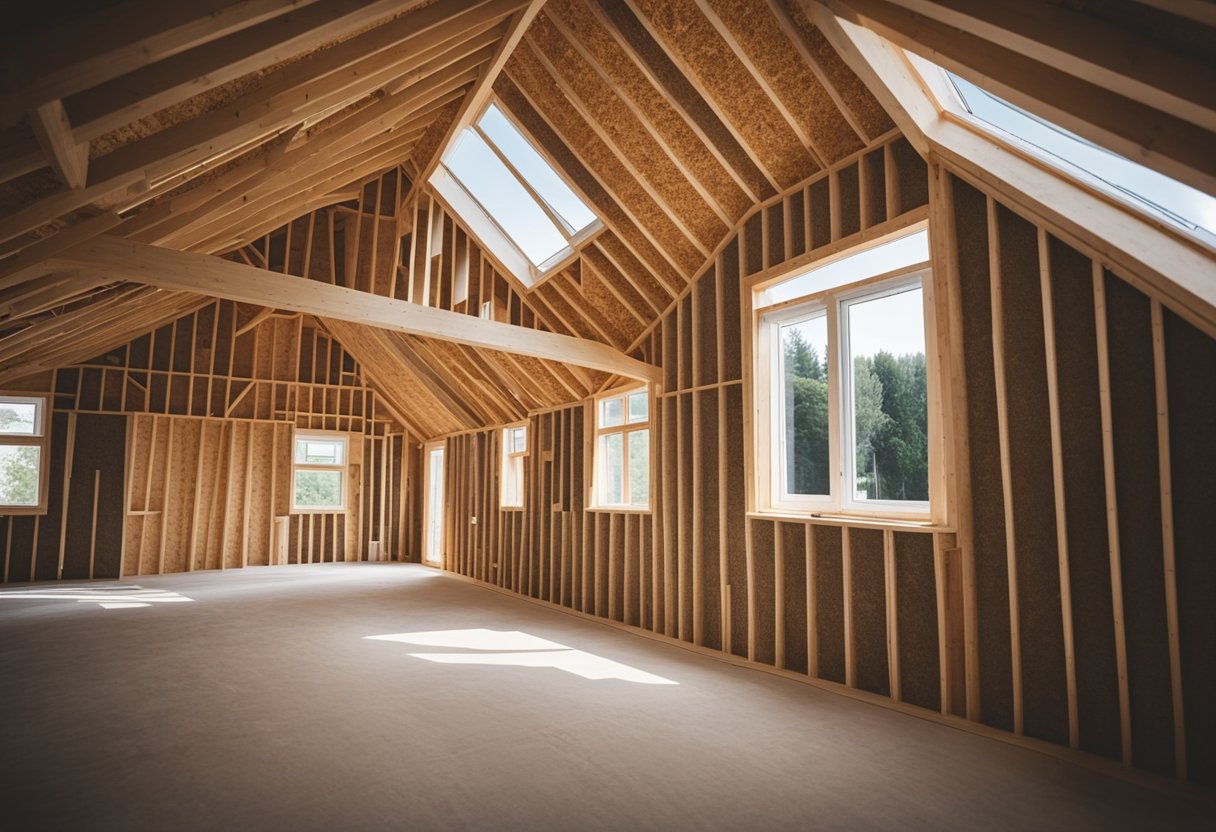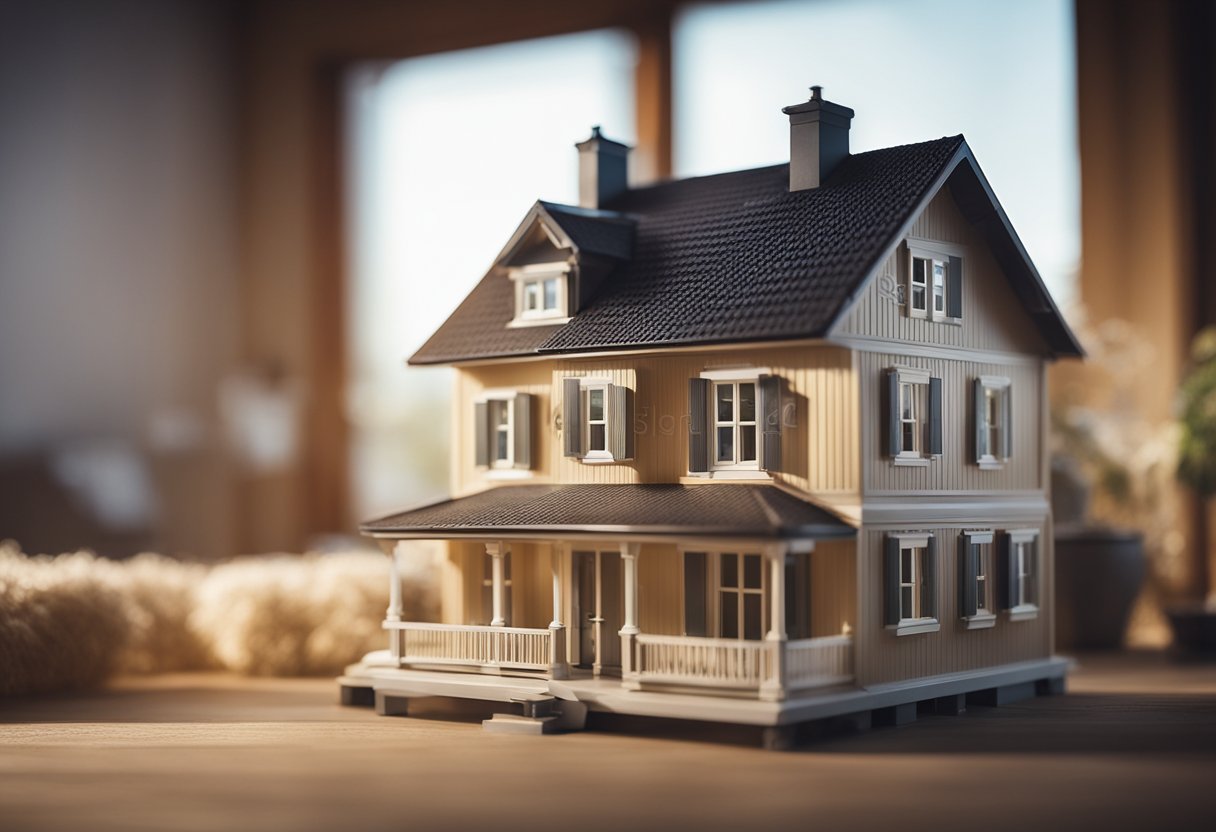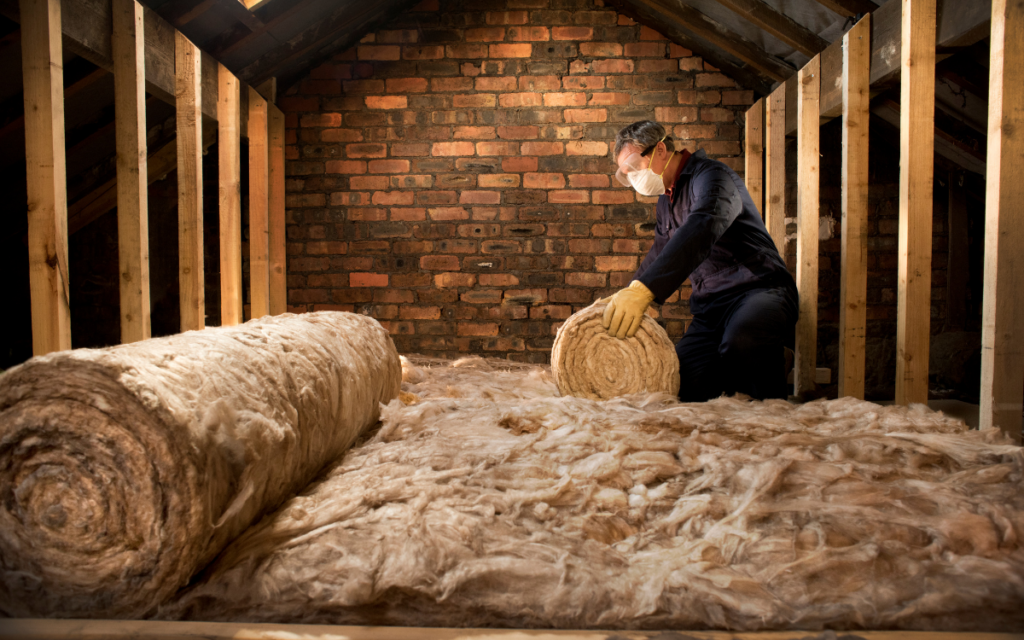What Are the Benefits of Home Insulation?
Historically in Ireland, our buildings and homes have not been built with the weather or energy efficacy in mind. This is why so many of us suffer from cold and draughty houses, especially during the winter months.
House insulation stands as a pivotal component in the establishment of energy-efficient and comfortable living spaces. It provides a barrier against heat loss during the colder months and helps maintain a cooler interior during summer. This temperature regulation serves to create a consistent indoor climate, reducing the demand for heating and cooling systems, which can significantly lower energy bills over time.

With energy costs climbing, the benefits of home insulation have become increasingly pronounced. Effective insulation not only leads to financial savings but also contributes to environmental conservation by reducing energy consumption. Meanwhile, improved insulation can also increase a property’s value and enhance soundproofing, creating quieter, more peaceful living environments.
Moreover, a well-insulated home contributes to the wider goal of energy security and the pursuit of net-zero emissions, a target many governments have committed to achieving. By insulating homes, individuals can play a part in the collective effort to mitigate climate change, while experiencing the personal advantages of a more energy-efficient home.
Understanding Home Insulation

Home insulation is a critical component in maintaining a comfortable, energy-efficient living space. It assists in keeping warmth within the house during winter and reflects heat away during the summer months.
Fundamentals of Insulation
Insulation functions by reducing the heat transfer between the inside and outside of a property. In the winter, it retains heat within the living spaces, while in the summer, it prevents excessive heat from entering. Effective insulation results in less dependence on heating and cooling systems which can lower energy costs.
Areas of the home that typically require insulation include the loft, cavity walls, solid walls, the roof, under the floor, and around windows and doors. Each area benefits from a specific type of insulation tailored to the unique requirements of the space.
- Loft Insulation: Done by laying mineral fibre material between and over the joists, significantly reducing heat loss through the roof.
- Cavity Wall Insulation: Fills in the gaps between the walls, thereby preventing heat transfer through wall cavities.
- Solid Wall Insulation: Can be internal or external, adding a layer of insulation to solid walls which lack a cavity to fill.
- Floor Insulation: Minimises heat loss through the floorboards and can include sealing gaps to prevent draughts.
- Windows and Doors: Installing double-glazing or sealing gaps around frames can also improve a property’s thermal efficiency.
Different Types of Insulation
There are several types of insulation materials, each with its own advantages and suitable applications.
- Mineral/Stone Wool: Offers good fire resistance and soundproofing with a mineral composition.
- Glass Wool: Similar to stone wool, it provides effective thermal and acoustic insulation.
- Foam Insulation: Available as boards or spray-foam, foam insulation is versatile for various spaces including hard-to-reach areas.
- Natural Fibres: Sheep’s wool and wood wool are eco-friendly options that also provide good insulative properties.
Each insulation material has a different thermal resistance, measured as ‘R-value’. The higher the R-value, the greater the material’s insulating properties. Choosing the right insulation depends on the area of installation, the R-value needed, and personal preferences regarding environmental impact and cost.
Economic Benefits

Investing in home insulation provides significant economic advantages for homeowners, landlords, and tenants alike by directly reducing energy consumption and costs and indirectly increasing property valuation.
Lowering Energy Bills
Home insulation acts as a thermal barrier, keeping heat inside during colder months and outside during warmer ones. This thermal efficiency translates to a reduction in the need for heating and cooling, which significantly diminishes energy bills. A well-insulated home can lead to substantial energy savings:
- Autumn and Winter: Reduced reliance on central heating, cutting gas and electric costs.
- Spring and Summer: Less need for air conditioning or fans, leading to lower electric usage.
These savings are continuous, providing long-term financial relief for the customer. Under schemes like the Energy Company Obligation, customers may even receive support to offset the initial costs of insulating their homes, leading to earlier realisation of savings.
Increase in Property Value
Proper insulation not only delivers immediate cost benefits but also can increase a property’s market value. Energy-efficient homes often attract a premium, as prospective buyers or tenants look for homes with lower operating costs. Key points include:
- An improved Energy Performance Certificate (EPC) rating makes properties more appealing on the market.
- Landlords can benefit from higher rent yields, while homeowners might see a rise in sale price.
Summing up, the economic benefits of home insulation include both reduced energy bills, which lead to significant cost savings, and potentially increased property value, offering a lucrative return on investment.
Environmental Advantages

Effective home insulation plays a pivotal role in enhancing the energy efficiency of a property and significantly curtails carbon emissions. These benefits are critical in the effort to combat climate change and reduce households’ reliance on fossil fuels.
Reducing Carbon Emissions
One of the principal environmental benefits of home insulation is its capacity to lower carbon emissions. Heating homes typically involve the combustion of gas or oil, which releases carbon dioxide, a potent greenhouse gas. By improving a home’s thermal retention, less energy is required from these fossil fuels. This directly translates to a decrease in carbon emissions. An Energy Performance Certificate can reflect this improvement, offering a quantifiable measure of a home’s energy efficiency and environmental impact.
Energy Efficiency Measures
Home insulation is also considered a top-tier energy efficiency measure. By retaining heat, there is less demand for energy consumption, which can be particularly beneficial where government schemes, such as the Green Homes Grant, provide support for energy efficiency improvements. This helps to create sustainable living conditions and aligns with environmental targets set by both local and national governmental bodies.
Comfort and Health Improvements

Home insulation stands as a critical enhancement for any dwelling, targeting two key improvements in living conditions: comfort through regulated temperatures and health by reducing draughts that can carry allergens and dust particles.
Temperature Regulation
Home insulation is instrumental in maintaining a consistent temperature throughout the home. In the winter months, insulation reduces heat loss, ensuring the home stays warm without the over-reliance on heating systems. During the summer, it works to prevent excessive heat gain, which can lead to uncomfortably high indoor temperatures. The result is a steady and pleasant indoor environment that contributes to the overall comfort of the home’s occupants.
Draught Reduction
Draughts are streams of cold air that enter through gaps in the building envelope, which can lead to chilly and uncomfortable living spaces. Through draught proofing, such as sealing gaps around windows and doors, homes can achieve a significant reduction in unwanted air infiltration. This both enhances the comfort of residents by eliminating cold spots and contributes to energy-efficient homes by maintaining the desired temperature with less energy usage.
Government Grants, Incentives and Schemes

In Ireland, the government has launched various incentives and schemes to encourage homeowners to improve the thermal efficiency of their houses through insulation.
Grants and Funding Options
There are insulation grants available for all house types and capped. depending on the type of house. Grants are available for:
- Cavity wall insulation
- Attic insulation
- Heating systems
- BER
Practical Considerations for Installing Insulation

Before opting to insulate one’s home, it is crucial to consider whether to undertake the task as a DIY project or to engage professional installers, and to identify which areas of the home will benefit the most from insulation.
Identifying Areas for Insulation
The key areas to prioritise for insulation are those subject to the greatest heat loss, typically the loft, walls, and floors. Cavity wall insulation and solid wall insulation are essential in minimising heat escape through walls, especially in older homes. Loft spaces, being at the highest point of a home, is where the most heat loss happens and thus should also be a priority for insulation. Underfloor insulation is vital for homes with suspended floors, as it prevents draughts and heat loss from the ground floor.
- Loft Insulation: Crucial for preventing heat from rising and escaping through the roof.
- Cavity and Solid Wall Insulation: Reduces heat loss through walls; ideal for improving the thermal envelope of the home.
- Underfloor Insulation: Important for homes with unsealed floor spaces to improve overall thermal performance.
Choosing the right insulation material and understanding its application are essential. Materials range from fibreglass and mineral wool to more advanced options like polyurethane foams. The design and structure of the home will ultimately dictate the best materials and methods for insulation.
Long-Term Effects

Investing in home insulation reaps benefits that extend far beyond the immediate comfort it provides. It is a strategic move towards creating a home that not only conserves energy but also stands the test of time in terms of structural integrity and market desirability.
Home Maintenance and Durability
Proper insulation acts as a protectant, shielding a house from rapid temperature changes and moisture accumulation. When a residence is adequately insulated, it mitigates the potential for damage caused by condensation and mould, effectively prolonging the lifespan of the building materials. Energy efficiency upgrades in the form of insulation contribute significantly to the overall upkeep of the property, ensuring that the elements are kept at bay and structural repairs are minimised.
Insulated homes are better able to maintain a consistent internal climate. This stability reduces the strain on heating and cooling systems, enabling these appliances to last longer and perform more efficiently. As a result, homeowners might also see a decrease in maintenance requirements and costs.
Resale Value and Market Attractiveness
A well-insulated home is more appealing in the real estate market. Prospective buyers place a high value on energy-efficient homes, recognising the cost savings associated with reduced energy consumption. An Energy Performance Certificate (EPC) that depicts high levels of thermal efficiency can elevate a property’s market value, as it is an official guarantee of the home’s energy performance.
Such homes are often viewed as future-proofed investments, meeting the growing demand for sustainable living. In the long run, the ability to insulate a property effectively can be a compelling selling point. It signals to buyers that the home can provide a more stable and comfortable environment that aligns with environmentally-conscious values while also promising lower utility bills.
Conclusion

Proper insulation in a home offers undeniable benefits. Energy efficiency is perhaps the most significant advantage, as it ensures that heat is retained during winter and the interior remains cool in summer. This leads to a direct reduction in energy consumption, which translates to lower energy bills. It also has a positive impact on the environment, owing to the reduced carbon dioxide emissions associated with less energy use.
In addition to economic and environmental benefits, insulation improves indoor comfort levels. Homes are consistently warmer in colder months and cooler during warm periods, contributing to a more comfortable living environment. Moreover, certain types of insulation can enhance a building’s acoustic performance, decreasing noise pollution from external sources.
Finally, with the introduction of government initiatives, such as the Great British Insulation Scheme, there is now increased support for homeowners to undertake insulation projects. These programmes aim to make insulation more affordable and accessible, thus encouraging widespread adoption.
Insulation is not merely a building requirement but a smart investment in a property’s future, aligning with both personal and broader ecological considerations.
One way to combat this problem is to invest in home insulation. Here are some of the top benefits of reasons for getting home insulation.
Home Insulation Dublin
As one of the most established home insulation companies in Dublin, Usher Insulations offers a range of home insulation products and materials, including roof insulation, wall insulation, floor insulation, soffit insulation, attic insulation, and more. We are available for all home insulation construction throughout Dublin for both new build and retrofit projects. For more information on home insulation in Dublin contact the team at Usher Insulations on 018201921


